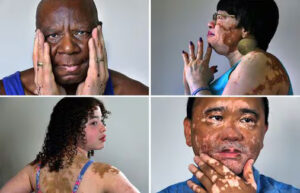Vitiligo is a skin condition that affects millions of people worldwide, causing the skin to lose its natural pigmentation. This occurs when the cells responsible for producing melanin (the pigment that gives skin its color) stop functioning or die. As a result, patches of skin become lighter or completely white. While vitiligo is not life-threatening or contagious, it can significantly impact an individual’s self-esteem and social interactions, especially due to societal misconceptions and stigmas.
What Causes Vitiligo?
The exact cause of vitiligo is still not fully understood. However, scientists believe that it is linked to an autoimmune response. In autoimmune conditions, the body’s immune system mistakenly attacks healthy cells, and in the case of vitiligo, it targets melanocytes, the cells that produce melanin. Factors such as genetics, environmental triggers, and stress may also play a role in its development. Vitiligo can affect people of any age, gender, or ethnic background, though it is more noticeable in individuals with darker skin tones.

Managing Vitiligo
Though there is no cure for vitiligo, there are several ways individuals can manage the condition and improve their quality of life:
- Medical Treatments:
Medical treatments such as topical corticosteroids, immunomodulators, and light therapy (phototherapy) can help in slowing down the progression of the condition and, in some cases, restoring color to the skin. - Cosmetic Solutions:
For those who wish to even out their skin tone, cosmetic options like makeup, self-tanners, or skin camouflage products can be helpful. These products can cover the lighter patches, making the condition less visible. - Sun Protection:
Vitiligo-affected skin is more sensitive to sunburn, so it’s essential to use sunscreen with high SPF to protect the skin from UV damage. Wearing protective clothing and avoiding excessive sun exposure can also help maintain skin health. - Support and Counseling:
Managing the emotional impact of vitiligo is just as important as the physical aspects. Many individuals find comfort in joining support groups where they can connect with others who share similar experiences. Counseling can also be valuable in improving self-esteem and mental health.
Reducing Stigma Against Vitiligo
One of the biggest challenges individuals with vitiligo face is the stigma and social pressure that comes with looking “different.” Educating society about vitiligo is essential in reducing ignorance and promoting acceptance. Media representation of individuals with vitiligo, such as fashion models and public figures, plays a significant role in normalizing the condition. Encouraging open conversations about skin diversity in schools, workplaces, and communities can further dispel misconceptions and create a more inclusive environment.
While vitiligo presents challenges, individuals living with the condition can lead fulfilling, happy lives. By embracing skin diversity, seeking medical and emotional support, and educating society, we can reduce the stigma surrounding vitiligo and promote a culture of acceptance and love. Remember, beauty comes in all shades, and each person’s uniqueness is something to celebrate.
(Please enter your Payment methods data on the settings pages.)